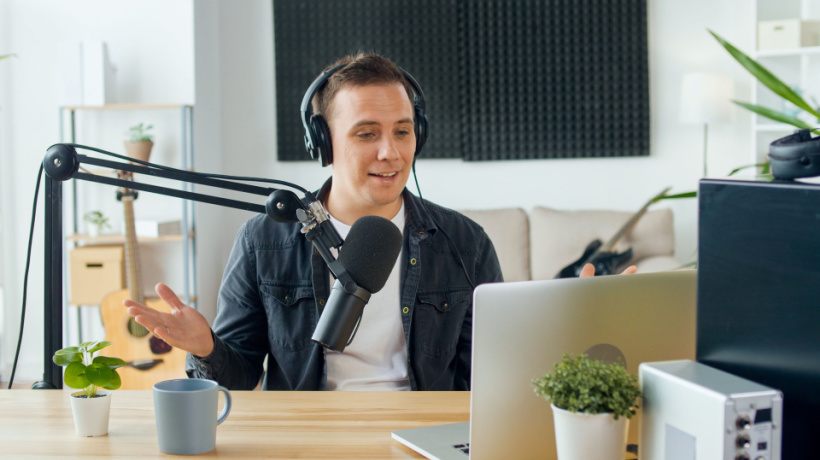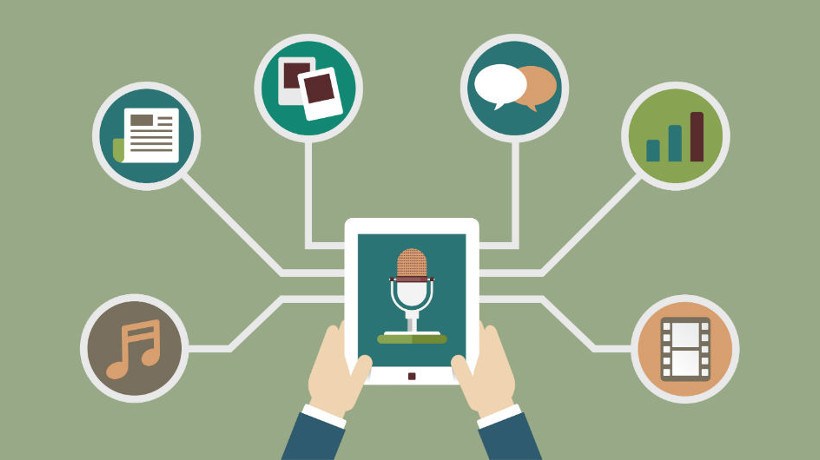Developing Your Own eLearning Podcast In 7 Easy Steps
In the past decade, podcasts have become a favorite pastime for people, providing them with a fun and engaging way to inform and entertain themselves. And more recently, we are seeing podcasts making a transition into the learning field as more and more organizations are recognizing their positive impact on learner engagement and retention levels. If you are interested in exploring the benefits of using podcasts for learning purposes, you'll be happy to hear that it's easier than you might think. In this article, we explore 7 basic steps you can follow to create a podcast that will help your audience advance their skills.
What Equipment Do You Need To Create Podcasts?
Many organizations hesitate to venture into making their own podcasts for fear that the process will be too complex to carry out or the equipment will be too expensive for their learning strategy budget to cover. However, this is far from the truth, as a simple podcast can be created using only the following.
Headphones
Although it's possible to record without them, headphones give you the ability to experience the podcast the same way your listeners do. You can listen closely to gauge the sound quality and pinpoint mistakes or noises that need to be edited out. We're sure that you already have headphones lying around, but if you don't, remember that you don't need the latest model to get the job done.
Microphone
The microphone is probably the most important piece of equipment, as it captures your voice and makes sure it arrives to your audience loud and clear. Most smartphones and laptops have built-in microphones, but an external one will give you more audio setting options and maximize the sound quality. You can combine purchases by opting for a headset that comes with an attached microphone.
Computer
A computer—specifically, a laptop for portability reasons—is the tool that will give your podcast its final form. It's where you will connect your headset and microphone to carry out the recording and download specialized software to edit the final result. This process usually requires quite a bit of memory space and a decent operating system, which is why this piece of equipment will probably be your biggest expense.
Recording And Editing Software
There are many choices here, from very expensive and robust solutions to software you can download and run free of charge. If you're new to podcasting, you should definitely look into the latter software solutions, as many of them can more than cover the basic needs of podcast development. Look up video tutorials online to help you get the knack for operating them.
Bonus: Camera
Podcasts are audio-only media, but creators often choose to accompany the sound with a video. If that sounds like what you want to do, you need to estimate a larger budget, as videos for learning purposes need to be of high quality to attract learners. Therefore, consider investing in professional, or at least semi-professional, camera and video editing software.
7 Steps To Create A Podcast Of Your Own
Podcasts are fairly easy to develop, which is why they have grown so much in popularity in recent years. But you still need to follow certain steps to make sure that the content you create fulfills your initial purpose. Here is what you need to do to create a successful podcast.
1. Figure Out The Concept Of The Podcast
You might be eager to grab the microphone and get to business, but a successful podcast requires some deliberation. First, you need to define the goals of your podcast. What do you want your audience to learn from it? Which are the topics that you want to cover? These questions, among others, will help you narrow down your content and find a niche that attracts listeners and gives them meaningful information instead of generalities that they could get anywhere else. Make sure to give your podcast a name that is specific to its purpose yet succinct and memorable.
2. Choose A Podcast Format
There are different types of podcasts, but your audience must determine your final decision. What do you think they would enjoy more? A conversation between two or three speakers or someone talking solo? You can conduct an informal survey to gauge the preferences of your listeners to increase your chances of success. Below, you can find the most popular podcast types:
- Monologue podcasts. In this type, a single host conducts the entire episode with no external participation from other parties. The speaker is usually a Subject Matter Expert, and their main purpose is to impart valuable information and knowledge regarding a specific topic.
- Interview/conversational podcasts. In this very popular type of podcast, one or two hosts have a more relaxed conversation about the subject matter, or they interview guests about it. This format offers listeners a wide variety of viewpoints and insights.
- Non-fiction storytelling podcasts. Storytelling has great power in helping people relate to case studies and extract more insightful information. In addition, people are drawn to narrative podcasts for the immersive and engaging learning experience they foster. To create such a podcast, you need to have in-depth knowledge of the topic at hand and be able to communicate it in an interesting manner.
- Repurposed content podcasts. This format can be very useful in educational settings, as there might be content in different formats that can be successfully converted into audio. For example, you can record live lectures, presentations, articles, and blogs and incorporate them into your podcast.
- Hybrid podcasts. This allows you to mix and match the choices above to create a hybrid that works best for your audience and its learning needs. For example, you might have a majority of monologue episodes but enrich them from time to time with expert interviews or some repurposed content.
3. Create A Detailed Storyboard
Before you start recording, it's essential to know the specifics of what you want to say. Going into a podcast unprepared will result in unstructured arguments, awkward pauses, and an overall unpleasant experience. To avoid all that, develop a detailed outline for every episode. Some people like to create a full script for their podcasts so as not to miss anything, while others like to speak organically, using minimal to no notes. We suggest a middle-ground solution so that you avoid sounding robotic but also have a few notes to keep your thoughts in order.
4. Set Up And Record
At this point, you are finally ready to record your podcast. Set up your equipment, prepare your script or notes, and get started. Make sure to pick a quiet place to do your recording to minimize background noise as much as possible. The best choice would be a smaller room with lots of furniture and rugs to act as padding. To achieve the best results possible, we suggest that you record a test track first to identify any issues with your recording equipment and/or space and iron them out before you record your final content.
5. Edit Your Content
The editing process is meant to clean up the sound and ensure the podcast runs smoothly. Seeing as editing software can be tricky to use until you get the hang of it, we suggest you focus on two key elements: content errors and sound issues. Therefore, start by cutting out repetitions, mistakes, or rambling, and then remove any sound distortions, background noise, breathing sounds, etc. It's not mandatory, but in this stage, you could create an engaging intro and outro that will tell your audience what they should expect to hear and invite them back for the next episodes accordingly.
6. Upload Your Podcast
Once the editing is complete, you are left with a WAV or MP3 audio file that is ready to be listened to and shared with your audience. At this point, the choice is yours, and there is an abundance of them. You can upload your podcast onto one of the many sound streaming platforms available (such as Spotify, Apple Music, Amazon Music, and more) or on the online learning platform that you and your learners use as part of your training program. Whatever choice you make, it must be easily accessible to enhance the reach of your podcast.
7. Sharing Your Podcast With The World
Directing people to your content is crucial for the success of your online training program. You can't expect people to know that you have created a podcast if you don't tell them. Thankfully, there are various ways to promote your podcast, such as uploading a post on your organization's social media, letting your employees know through your internal communications platform, or writing a blog post describing its purpose and linking to it. The more effort you put into marketing your work, the more people it will reach and attract.
Conclusion
Hopefully, this article has given you all the information you need to know about podcasts and how to get started creating your own. Follow the insightful tips we shared and offer learners a new, engaging, and efficient way to develop their skills.






